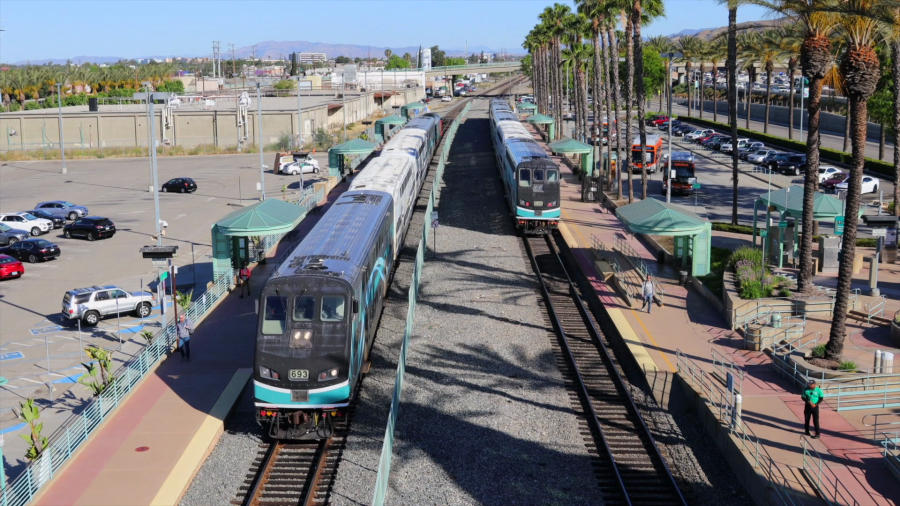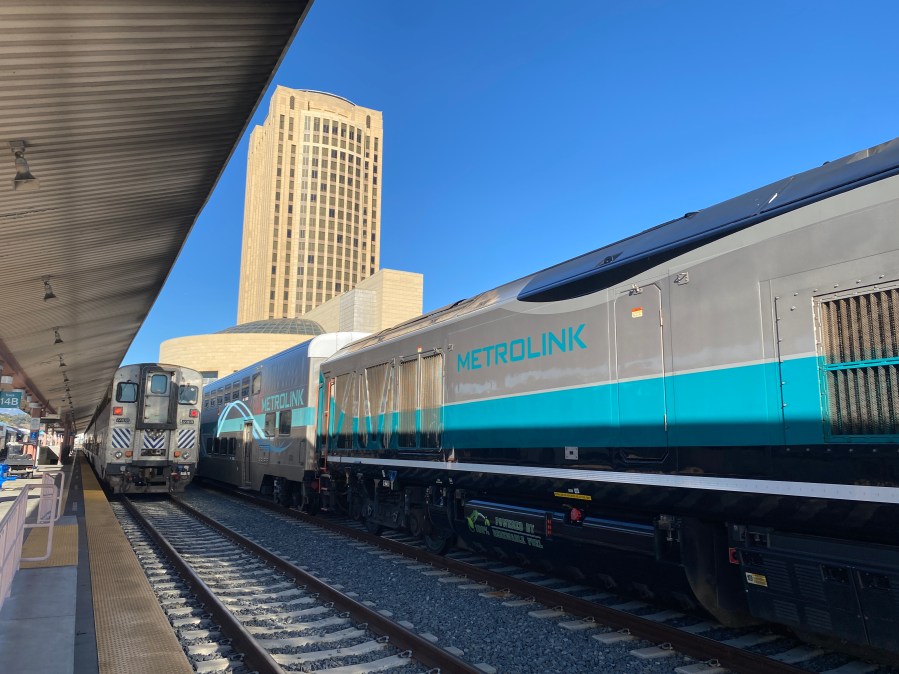Southern California passenger rail service Metrolink is making a major expansion this fall, significantly increasing the number of trains in service and optimizing arrival and departure times to reduce the time spent waiting to transfer.
On Friday, the Metrolink Board of Directors approved its 2025 fiscal year budget, which includes a plan to increase the number of trains in service by about 30% across the entire Metrolink system.
At a media event held at Union Station, Metrolink CEO Darren Kettle, fresh off inking an extension to remain in that position through 2029, said the expanded service is meant to attract more riders who may view the service as something only used by commuters.
“I call it the first step in our transformation from commuter railroads to regional passenger railroad,” Kettle said.
The decision to target more recreational riders was made in part due to challenges that came from the coronavirus pandemic.
Ridership took a nosedive to about 10% during the pandemic due to stay-at-home orders and more people working from home. Kettle says the latter appears to be a permanent shift in the nation, and if Metrolink wants more people to use the service, it’ll need to become a more attractive transit option for riders who aren’t just going to and from work.
“The world changed four years ago. And, you know, we’re all trying to figure out, how do we adapt to the new workforce situation, but not just rely on that?” Kettle said. He added that any transit agency focused solely on commuters will likely have a long, challenging road to recovery.

“We used to get some 40-plus percent of our revenues from fares, today we get about 13% of our revenues from fares,” he said. Metrolink’s county partners, as well as the federal government, have helped carry some of the burden from the loss of revenue.
But rather than focusing on getting back to pre-pandemic ridership numbers, Metrolink is viewing the sharp decline as a new baseline, with the only way to go being up.
Kettle, who lives in Ventura County and rides the train on days when he’s not working from home, said the biggest request he’s received from fellow riders is more regular service.
“We do surveys and ask questions and just unsolicited feedback is, ‘Give us more trains.’ So that’s what we’re going to do,” Kettle said. “We’re gonna get more trains.”
The Orange County and San Bernardino lines were two specific parts of Metrolink’s system that Kettle said will experience “significant” service increases. A similar service increase was implemented last year on the Antelope Valley line.
Metrolink will also roll out a new concept in which trains won’t always run an entire service route from end to end; some will go back and forth more frequently between regions with more demand.
In addition to more trains, Metrolink is adjusting its schedules to make it easier for riders to make transfers without having to wait for long periods of time.

Right now, someone who arrives at Union Station from one of the Metrolink lines may have to wait an hour or longer to transfer to another.
“Pulse scheduling,” as its called in the transit industry, will significantly cut the wait times for transfers by modifying arrival and departure times so they are more closely aligned with other trains. Metrolink says someone making a transfer in Union Station will likely have to wait less than 20 minutes to make a transfer from one line to another.
As Metrolink pointed out earlier this year, a theoretical trip between Burbank and Tustin beginning at 8:30 a.m. would take more than six hours, because there currently isn’t a train to Tustin out of Union Station until 2 in the afternoon.
When pulse scheduling goes into effect, that trip could be cut down to 90 minutes with a transfer taking less than 20 minutes. A fictional trip between downtown Pomona and Van Nuys using similar parameters would also a dramatic drop in total trip time.




The specific launch date for increased trains was not immediately released, but Kettle said he expected it to go into effect in late October. An exact breakdown of when and where trains will be deployed has yet to be finalized, with Metrolink officials saying a full plan could be approved by July or August.
Metrolink hopes that more train frequency and shorter transfer windows will help reinvigorate previous riders and bring in more first-timers.
In addition to service modifications, Metrolink says it sees other areas to grow, including on its San Bernardino Line, which includes a stop in Rancho Cucamonga immediately adjacent to a planned station for Brightline West — the high-speed train system that will connect Southern California with Las Vegas.
Metrolink’s popular Student Adventure Pass Program, which allows any student from kindergarten through grad school to ride throughout the entire system for free, was also renewed as part of the 2025 budget.






















